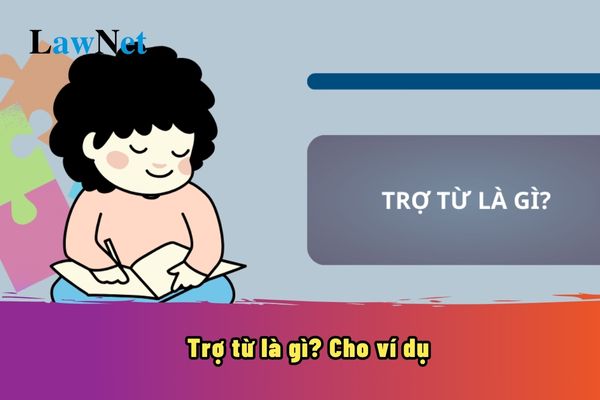What does particle mean? Give examples of particles in Literature. What are the general orientations in teaching methods for the 8th-grade Literature curriculum in Vietnam?
What does particle mean? Give examples of particles in Literature
Students may refer to the following information on particles and examples of particles in Literature:
|
What does particle mean? Give examples of particles in Literature Particles are words added into a sentence to emphasize or express the speaker's attitude or viewpoint towards the mentioned object or phenomenon. They do not have an autonomous meaning but often accompany other words in the sentence to clarify or highlight the meaning. |
*Note: The information is for reference only./.

What does particle mean? Give examples of particles in Literature. What are the general orientations in teaching methods for the 8th-grade Literature curriculum? (Image from the Internet)
What is the grade at which the Literature curriculum covers particles?
Under Section 5 of the Appendix of the General Education Program for Literature, issued together with Circular 32/2018/TT-BGDDT, the required Vietnamese knowledge after studying the 8th-grade Literature curriculum is as follows:
VIETNAMESE LANGUAGE KNOWLEDGE
1.1. Meaning of some relatively common idioms and proverbs
1.2. Semantic nuances of words and the choice of words
1.3. Sound-symbolic words: features and effects
1.4. Meaning of some common Sino-Vietnamese elements (e.g., vô, hữu) and the meaning of words containing those elements (e.g., vô tư (unselfish), vô hình (invisible), hữu quan (concerned), hữu hạn (limited))
2.1. Particles, Exclamatory Words: features and functions
2.2. Detached components in a sentence: features and functions
2.3. Declarative, interrogative, imperative, and exclamatory sentences; affirmative and negative sentences: features and functions
3.1. Rhetorical inversion methods, rhetorical questions: features and effects
3.2. Literal and implied meaning of sentences
3.3. Inductive, deductive, parallel, and combinatory paragraphs: features and functions
...
Therefore, according to the above regulations, particles will be part of the 8th-grade Literature curriculum.
What are the general orientations in teaching methods for the 8th-grade Literature curriculum in Vietnam?
Under the General Education Program in Literature issued with Circular 32/2018/TT-BGDDT, the general orientations in teaching methods for the 8th-grade Literature curriculum in Vietnam are as follows:
The Literature curriculum utilizes education methods oriented toward integrated and differentiated teaching; diversifying educational methods, means, and organizational forms; promoting active, proactive, and creative learning, applying the knowledge and skills of students.
- Based on the program, teachers proactively and flexibly build and organize lessons according to the following orientations:
+ Implement intra-disciplinary integration requirements (both knowledge and skills), interdisciplinary integration, and integrate priority education content (cross-disciplinary); implement differentiated teaching according to student subjects at all levels and differentiation contributing to career orientation in high school education.
+ Train students in methods of reading, writing, speaking, and listening; practice, experience in receiving and applying knowledge of the Vietnamese language and literature through learning activities in and out of the classroom; focus on using teaching means, overcoming the traditional reading and copying teaching style, developing thinking, training skillful use of means for students.
+ Enhance and promote student activeness and self-reliance; allocate ample time for students to study textbooks and learning materials, practice, conduct presentations, discussions, and defend learning results to enable students to read, write, speak, and listen according to varying demands and levels; assess and evaluate student task fulfillment in their learning tasks.

